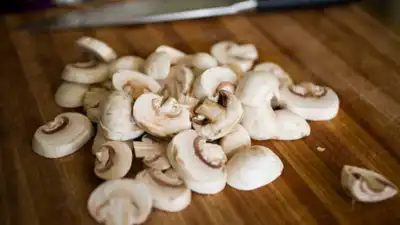Most of us aren’t sunbathing at noon or popping vitamin D pills like clockwork. And yet, vitamin D is that one nutrient our body keeps asking for quietly (until it screams with signs like fatigue, low immunity, and even bone pain). It’s not just a vitamin; it’s practically a hormone in disguise. It keeps your bones strong, your mood up, your immunity sharp, and your energy humming.
But if you’re not outdoors much or live somewhere where winter feels like a long, grey Netflix marathon, you might be running low. Luckily, your kitchen can help. No need for anything fancy—just real, everyday foods that sneak in that sunshine vitamin without much drama.
Here’s a look at the simple foods that naturally contain vitamin D, and why you might want to add them to your plate more often.
Egg yolks
Let’s start with something most of us already have in the fridge. Eggs, particularly the yolks, are a decent source of vitamin D. One yolk gives you about 40-50 IU of vitamin D. Not earth-shattering, but if you eat a couple daily it adds up. So, the next time you make scrambled eggs, ditch the egg-white-only mindset. The yolk is where the vitamin magic is. Plus, it’s delicious.
Mushrooms
Yes, mushrooms are basically fungi that moonlight as veggies. But they have one superpower: when they soak up UV light, they produce vitamin D—just like human skin does. Look for mushrooms labeled as UV-exposed or vitamin D-rich—portobello and maitake are top picks. Some mushrooms can offer up to 400 IU per serving, which is actually amazing for a plant-based food. Roast them, sauté them, or toss them in your pasta. Just don’t overcook the life out of them.
Fatty fish: Salmon
If vitamin D had a celebrity spokesperson, it would be salmon. A 100-gram (3.5 oz) cooked serving of wild salmon can pack up to 600 IU of vitamin D. Farmed varieties tend to have less, but they still deliver a punch. It’s one of the best whole-food sources of D you’ll find, and it’s good for your heart, skin, and brain too. Grill it, bake it, or even can it—just get it on your plate once or twice a week.
Cheese (especially Swiss or American)
Cheese doesn’t have a ton of vitamin D, but certain types—like Swiss, cheddar, and American—do contain small amounts. You’ll get around 12-20 IU per slice, so it’s more of a bonus than a major source. Still, if you’re already adding a slice to your sandwich or grating it over your eggs, every bit helps. And let’s be honest—cheese makes everything better.
Cod liver oil
Okay, hear us out. This old-school supplement isn’t just for grandparents. One teaspoon of cod liver oil contains about 1,360 IU of vitamin D. That’s well over the daily recommendation for most adults. It’s also rich in vitamin A and omega-3s, making it a powerhouse in a small dose. Not everyone loves the taste, but it’s available in capsules now. If you’re really low on D and your doctor gives the go-ahead, this might be your ticket.
Bonus: Fortified foods
Many breakfast cereals—especially the “healthy” ones like bran flakes or multigrain—are fortified with vitamin D. A serving can offer anywhere from 40 to 100 IU depending on the brand. Pair it with fortified milk and you’re giving your body a double shot of D before noon. Just watch the sugar content if you’re being health-conscious.
Getting enough vitamin D from food alone can be tricky. The daily recommended intake for adults ranges from 600 to 800 IU, but some experts say we may need more, especially if we’re mostly indoors or have darker skin.
That’s why this isn’t about one food saving the day—it’s about building a vitamin D-friendly routine with a mix of sunshine, smart eating, and maybe a supplement if needed.
